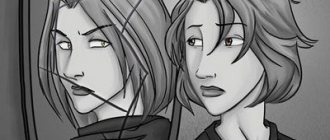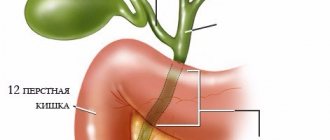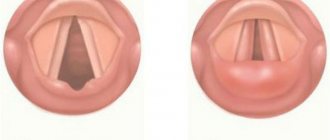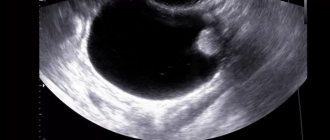Sudden weakness in the hand, the inability to make this or that movement, vague pain that does not have an exact localization - all these are symptoms of a serious neurological disease. Brachial plexitis can develop for various reasons. Usually the disease is characterized as a chronic degenerative process with predominant damage to the motor and sensory axons of the nerve fiber. If symptoms of brachial plexitis appear, then treatment with complete restoration of all lost functions can only be carried out in the first 10 to 14 months. then the process of nerve fiber atrophy begins and it will be almost impossible to restore its functionality.
This article describes in detail the characteristic symptoms and treatment of plexitis of the shoulder joint using manual therapy techniques. If you notice similar signs in yourself or a loved one, we recommend that you do not hesitate and immediately seek professional medical help from a neurologist. You can also schedule a free consultation with a neurologist at our manual therapy clinic. During the first appointment, which is completely free, you will learn about the expected diagnosis, prospects and possibilities for conservative treatment of the pathology.
It is necessary to understand that plexitis of the shoulder joint is a dangerous condition that can lead to a complete loss of mobility of the upper limb. This is not a lesion of one nerve, but of an entire plexus and bundle, which is responsible for the innervation of all tissues of the upper limb. the primary clinical sign is pain, which is subsequently supplemented by symptoms of autonomic dysfunction. In particular, the patient may complain of a lack of motor activity, decreased skin sensitivity, muscle weakness, a feeling of coldness in the hand, the appearance of paresthesia, crawling, etc.
Basically, the clinical picture is formed due to the severity of the lesion that caused the cause of plexitis and the continuation of its negative impact. if it was an injury, then the increase in clinical symptoms will occur extremely slowly. But if the cause is cervical osteochondrosis and intervertebral disc herniation, then the clinical picture will develop intensively with an increasing load on the radicular nerves.
Self-diagnosis is not effective, since only an experienced orthopedist can distinguish brachial plexitis from other degenerative diseases. To clarify the diagnosis, a series of laboratory tests will be required. This could be an x-ray, MRI, ultrasound, arthroscopy, electromyography, electroneurography, blood tests to exclude rheumatism, etc.
What it is?
Inflammatory damage to the nerve plexus in the hand distinguishes several variants of the problem:
- complete damage or paralysis of Kehrer;
- with only the upper area involved - proximal upper paralysis;
- involving exclusively the last section - inferior plexitis.
Experts divide plexitis of the shoulder joint by origin:
- infectious;
- toxic;
- compression-ischemic;
- dismetabolic;
- autoimmune type.
This form of plexitis is more common than other varieties: cervical, sacrolumbar variants.
The disease is widespread; against the backdrop of many sources of formation, the disease attracts the attention of orthopedists, obstetricians, gynecologists, rheumatologists, and toxicologists.
Causes
The primary source of development is considered to be various traumas that provoked damage to the nerve joint:
- Broken collarbone;
- Shoulder dislocation, including the usual form of the disease;
- Damage to the ligaments or tendons of the shoulder joint;
- Wounds of various types in the problem area.
The disease can be provoked by constant minor injuries to the problem area - when working with vibrating equipment, or the need to use crutches. Difficult childbirth can become the primary source of the development of proximal upper paralysis, a fairly well-known pathology in obstetric and gynecological practice.
The next highest number of patients is occupied by plexitis, which is associated with pressure on the problem area and the development of a compression-ischemic form. The disease occurs during a prolonged stay in a statistical position - in lying patients or during a night's rest, in the presence of protrusion of the subclavian artery, a tumor-like process, hematomas formed after trauma, with enlarged lymph nodes, congenital additional ribs, Pancoast oncology and the pressure they exert to the nerve plexus.
Infectious causes of the disease are represented by tuberculosis, brucellosis, herpetic lesions, cytomegaly, and syphilis. Shoulder plexitis forms after influenza, sore throat, and other viral pathologies. The dismetabolic form occurs in diabetes mellitus, gout, imbalance of protein fractions and other diseases in metabolic processes. There is a possibility that the disease will appear as a result of surgical manipulations in the area of the shoulder joint.
Treatment tactics
Plexit - what is it? Is it possible to get rid of the disease? Since plexitis is a complex of joint disorders, treatment takes a long time. First of all, it is necessary to provide complete rest to the affected hand. For this purpose, plaster splints and other orthopedic products are used. The specialist prescribes a course of analgesics and anti-inflammatory drugs.
Therapeutic measures take on a completely different character when a period of remission occurs and the symptoms of the disorder disappear. The treatment process includes massage, vitamin complex, exercise and physiotherapy.
Progress in treatment is possible only with a comprehensive approach to the causes of plexitis.
The most informative methods for making this diagnosis and excluding other pathologies of the shoulder joint are the following methods:
- ultrasound scanning;
- electroneuromyography;
- CT or MRI;
- radiography.
radiography
Carrying out a competent differential diagnosis is necessary to make the correct diagnosis, since the symptoms of plexitis may resemble manifestations of pathologies of the shoulder joint. Accordingly, these diseases need to be treated differently.
Effective treatment is based on identifying the cause of the disease and eliminating it. Next, an integrated approach to treating pathology and eliminating unpleasant symptoms is important. Drug therapy is based on the use of the following drugs: anti-inflammatory and analgesic drugs, agents for restoring nerve conduction, B vitamins, drugs that improve nutrition and blood supply to tissues. Medications with specific effects can be used if necessary.
Plexitis can be treated not only with the help of drug therapy. Good treatment results are also achieved by such treatment methods as:
- reflexology;
- ozokerite;
- cryo- and laser therapy;
- electrotherapy;
- hirudotherapy;
- massotherapy;
- balneological methods;
- physiotherapy.
electrotherapy
The best effects are achieved if plexitis is treated using several methods at once. Surgical intervention is used only in selected cases. It is important to consider that patients who have plexitis are strictly prohibited from excessive physical activity, hypothermia, and working in conditions of toxic fumes.
Symptoms
The main clinical sign of the pathology is severe pain of various types. Discomfortable sensations are located in the clavicular and shoulder areas and can affect the entire arm. An increase in pain is recorded at night, with involuntary movements of the affected limb.
As the disease develops, severe muscle weakness joins the syndrome.
Duchenne-Erb pathology is characterized by a drop in blood pressure, a decrease in muscle strength in the proximal part of the limb, and problems with its free movements: when trying to hold objects, bending in the elbow area.
Dejerine-Klumpke pathology is characterized by muscle weakness in the distal parts of the arm. The patient is not able to hold objects in it for a long time or perform the simplest actions: fastening, unfastening buttons, opening doors with keys, etc. If damage to the symptomatic fibers occurs, then ptosis, enophthalmos, and dilated pupils are added to the symptoms.
The pathological process may be accompanied by trophic disorders, as a result of impaired functionality of the peripheral autonomic nerves:
- change in the color of the upper limb to pasty or marbled tones;
- increased functionality of the sweat glands with the release of abundant secretions;
- dryness and thinning of the skin;
- increased fragility of nail plates.
There is slight trauma to the dermis with minimal exposure; the resulting wound surfaces do not heal for a long time. The bilateral form of the lesion is inherent in the infectious, dysmetabolic, toxic type of plexitis of the shoulder joint.
Symptoms of plexitis
- Cervical plexitis is manifested by the following symptoms: acute pain in the neck (along the lateral surfaces), often paroxysmal, sometimes radiating to the back of the head;
- weakness of the neck muscles - this affects head tilts and neck turns;
- hiccups - sometimes painful, incessant. This is due to the involvement in the inflammatory process of the phrenic nerve, which innervates (provides nerve fibers) the diaphragm, whose involuntary contraction leads to the occurrence of hiccups;
- breathing disorder - in this case, a person’s breathing is shallow, the stomach is drawn in when breathing. It is also associated with involvement of the phrenic nerve and paralysis of the diaphragm, which is normally actively involved in breathing. Often a person cannot cough or speak loudly.
- Brachial plexitis is manifested by the following symptoms: severe pain in the collarbone area with irradiation (spread) to the arm, aggravated by active or passive movement in this limb;
- decreased sensitivity of the skin of the arm and shoulder girdle;
- weakness of the arm muscles - up to the complete impossibility of active movement of the arm. At the same time, the hand “hangs like a whip”;
- swelling of the soft tissues of the hand;
- paleness and coldness (cold to the touch) of the skin of the hand;
- brittle nails on the fingers.
- Lumbosacral plexitis is manifested by the following symptoms: severe pain in the lumbar region and in the leg (thigh, lower leg, foot), which intensifies with active or passive movement in this limb;
- decreased sensitivity of the skin of the leg;
- weakness of the leg muscles - up to the complete impossibility of its active movement;
- swelling of the soft tissues of the leg;
- pale and cold (cold to the touch) skin of the legs;
- brittle toenails.
Diagnostics
When visiting a local clinic, the patient is referred for a consultation with a neurologist. The specialist conducts a visual examination, palpation examination and finds out all the nuances of the problem: the time of onset of the primary symptoms, the nature of their manifestation, previous diseases, injuries, injuries.
After making a preliminary diagnosis, the patient receives a referral:
- for neuromyography, electromyography - procedures allow you to assess the state of the peripheral nervous system and muscle tissue;
- MRI, CT - methods help to detect places of violation of the integrity of fibers, sources of nerve compression: neoplasms, aneurysms;
- X-ray images - indicate the sites of fractures, areas of exudate accumulation;
- clinical and biochemical blood tests - help to assess the general condition of the body, identify hidden inflammatory processes, and determine the type of pathogen that has penetrated.
If the data is questionable, the patient may be additionally referred to a traumatologist, urologist, or gynecologist. Specialists prescribe an ultrasound examination of internal organs and x-rays of the spinal column.
Identification of the disease
It is difficult to visually confirm whether brachial plexitis is present. The symptoms and treatment of this disorder are similar to some joint diseases. Diagnosis is carried out by a specialist by studying the anamnesis, identifying the causes of pain, the severity of the disorder and symptoms. A thorough examination of the patient, his skin, assessment of nails and muscle strength is carried out.
Laboratory tests are also carried out, which include blood and urine tests. Internal examination is carried out using ultrasound and X-ray machines:
- Ultrasound examination of the pelvic organs.
- Electroneurography is necessary to clarify the speed of movement of nerve impulses.
- Electromyography allows you to evaluate muscle activity and strength.
- X-ray of the affected area.
- Magnetic resonance imaging.
In addition, consultations with specialists such as a gynecologist, urologist, orthopedist, oncologist and neurosurgeon will be needed. The participation of all physicians is necessary to differentiate plexitis from other disorders that have similar symptoms.
Treatment
The treatment regimen is prescribed according to diagnostic tests, the severity of the pathological process, and existing concomitant diseases. Professional help is practically not sought in the initial stages of the disease; specialists are faced with advanced processes when there is no hope for a quick cure.
The main objectives of the therapeutic area include:
- complete relief or reduction in the severity of pain;
- stabilization of blood circulation in weakened muscle tissues;
- stopping further development of the inflammatory process;
- restoration of lost sensitivity of nerve fibers;
- return of mobility of the affected upper limb;
- increasing the tone of muscle tissue, solving the problem of their relaxation.
Drug therapy involves the use of separate pharmacological subgroups by your doctor:
- NSAIDs are intended to relieve inflammatory reactions and suppress pain. The drugs have a large number of side effects and are taken strictly according to the recommended algorithm. For plexitis of the shoulder joint, therapy is carried out with Diclofenac, Piroxicam, Meloxicam, Nimesulide, Ortofen, Movalis.
- For local treatment, creams, gels and ointments with an anti-inflammatory spectrum of action are used, which help reduce tissue swelling and improve local blood circulation. Treatment of the disease is carried out with Voltaren-emulgel, Fastum-gel, Troxerutin, Lyoton, Troxevasin, Fort gel, Artrum gel, Nise.
- Hormonal agents - the prescription of a subgroup of glucocorticosteroids occurs in cases of complex pathology. The drugs easily eliminate extensive inflammatory processes, but require increased caution when used. Frequently prescribed ones include: Betnovate, Hydrocortisone, Cortonitol-Darnitsa, Gioksizon.
- Painkillers – can reduce pain levels and normalize the body’s condition. To obtain the effect, Analgin, Baralgin, Spazmalgon, Spazgan, Tempalgin are used. Analgesics vary in strength; for intolerable, excruciating pain, narcotic drugs may be prescribed.
- Antispasmodics - reduce spasms of muscle tissue, relieve discomfort: Mydocalm, Tolperisone, Sirdalud, Miolgin.
- Multivitamin complexes - restore the functionality of the autoimmune system, improve the functioning of internal organs, accelerate recovery processes due to a sufficient amount of vitamins and minerals: Centrum, Vitrum, MultiMax, Alphabet, Complivit.
Physiotherapeutic procedures are prescribed only after the problem of the inflammatory process has been resolved. The attending physician selects the most appropriate technique.
Frequently prescribed ones include:
- electroanalgesia – tissues are affected by short pulses, which helps reduce pain;
- UHF procedures prevent the accumulation of fluid in problematic tissues and cavities of the statutory apparatus;
- ultrasonic, infrared influence – accelerates the processes of regeneration of damaged elements;
- neuroelectric stimulation – helps restore damaged nerve fibers;
- magnetic therapy - in the process, vasodilation occurs, which increases the level of supply of nutrients and oxygen to the damaged areas.
The recurrent type of the disease requires sanatorium-resort treatment in specialized health resorts.
External means
Cabbage compress
- Cabbage is often recommended as a compress for joint problems. It is also used to treat plexitis. Hold one large or two medium cabbage leaves over the steam until it becomes soft, place it on your shoulder and secure it with an insulating bandage. Leave until morning.
- Apply a compress of willow bark infusion in the evening, before bed. Take fifteen grams of bark, finely chop and add to two hundred and fifty ml of boiled water. After an hour, strain, soak a compress cloth in the infusion and secure it to the shoulder joint.
Propolis ointment
- Prepare propolis ointment and use it once a day, in the evening. Mix three grams of crushed propolis thoroughly with fifty grams of rendered pork fat. Rub into the skin of the shoulder, shoulder blade and upper arm.
- Take two fresh raw chicken eggs, pour two tablespoons of turpentine and ammonia into them. Whisk thoroughly and use to rub the sore shoulder in the evenings, just before bed.
- Cut a piece of natural wool fabric, soak it in a mixture of vinegar and crushed incense and secure it to the shoulder joint. Daily compresses will very quickly relieve pain.
Willow leaf compress
- Tear juicy willow leaves, rinse them from dust and grind them to a paste. Place on the sore joint and secure with a waterproof bandage.
- Prepare an alcohol tincture of red pepper. Its action is aimed at pain relief and warming. Pour thirty grams of washed and chopped hot peppers with a glass of medical alcohol. After two weeks, strain. Rub pepper infusion on your sore shoulder every day.
Oatmeal compress
Prevention
Experts recommend adhering to certain rules for preventing the development of plexitis of the shoulder joint:
- prevention of possible injuries;
- refusal to give birth at home without obstetric care;
- timely treatment of infectious and inflammatory diseases, injuries, autoimmune diseases;
- correction of existing metabolic disorders.
To increase the resistance of nervous tissues to external negative influences, the patient must adjust his work and rest schedule, periodically exercise, switch to a diet, and do not forget about seasonal vitamin therapy.
If you seek professional help in a timely manner and completely eliminate the sources of development of the pathological process, properly selected treatment allows you to completely restore the damaged tissue structures of the nerve plexus. Late diagnosis of the disease does not guarantee absolute recovery - it often becomes chronic.
Insufficient innervation provokes irreversible changes, with the formation of muscle forms of atrophy and joint deformation. Taking into account the damage to the leading upper limb, the patient loses the ability to self-care and perform work duties.
Brachial plexus reconstruction
The therapeutic effect is determined by the root cause of the pathology. In case of an infectious abnormality, antibacterial, antiviral, and anti-inflammatory pharmaceutical drugs are prescribed. Injured limbs are fixed at rest. Painkillers are prescribed. If plexitis is caused by the compression effect of tumors, hematomas, aneurysms, etc., surgery is prescribed. The pathogenic object is removed. If the integrity of the nerve trunks is damaged due to injury, surgical repair of the fibers is prescribed.
As a general recommendation, treatment is prescribed to improve metabolism and blood supply. After the acute pain has been relieved, restorative physiotherapeutic manipulations are prescribed: physical therapy, massage, a visit to the physiotherapy room.
If the pain is not relieved with medication, nerve blocking, UHF, and reflexology are prescribed. Therapeutic manipulations do not stop throughout the entire recovery period, which can last up to 12 months. Continuous exercise therapy with a gradual increase in load is mandatory.












